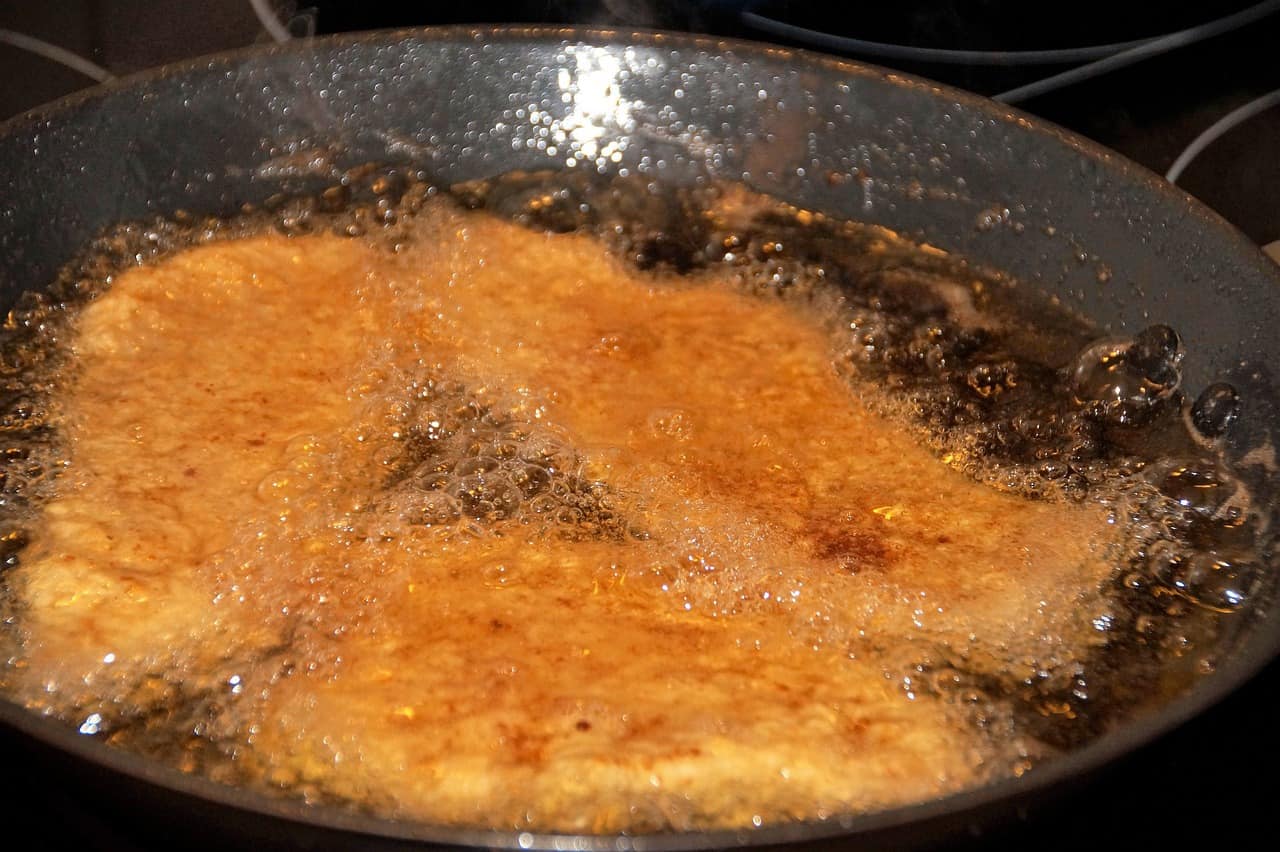Frying is one of the fastest and easiest (and tastiest) cooking methods around. However, one problem is the amount of oil you need to cook your favorite dishes. Fortunately, you can reuse frying oil several times before you have to throw it out. That said, saving fryer oil is not as easy as it sounds. There are some factors to consider, which I’ll discuss in this article.
The best way to store cooking oil after frying is to strain the oil through a cheesecloth or strainer. Doing this helps remove any food bits that may be leftover. Then, put the oil in a glass or stainless steel jar with a bit of room at the top for air. Finally, store the container in a cool, dry place until you have to use it again. For long-term storage, I recommend using a fridge or freezer to prevent spoilage.
How to Store Cooking Oil Long-Term After Frying
Although storing cooking oil is a relatively straightforward process, there are many variables to consider, such as:
Storing Temperature: If you’re planning on keeping the oil for a couple of weeks, you need to keep it at room temperature. For long-term storage, the refrigerator or freezer is best. Cooling the oil helps prevent oxidation and spoilage.
Storage Duration: As a rule, used cooking oil should be used within four months. Otherwise, it can spoil and turn rancid. The sooner you can use it, the better.
Coloration: Brown or black oil is burnt and won’t taste good when reusing it. Typically, oil is only suitable for three to five uses, as it will burn a little more each time. Only save golden-yellow oil.
Food Usage: If you used the oil to fry fish, you won’t want to reuse it at all since the fishy smell and taste will permeate the liquid. Also, I recommend labeling your oil with what you cooked in it so that you use it for similar dishes. Otherwise, the flavor of the first batch can affect your cooking methods next time.
Container: Glass is best for used oil or the original plastic container. Brass, aluminum, and plastic can affect the oil’s flavor, so I don’t recommend those materials.
Reuse Methods: You don’t want to reuse cooking oil for dressings and other lightly flavored dishes. Since the oil loses much of its taste from cooking, the results won’t be very appetizing.
What is the best way to strain and filter cooking oil after frying
No matter what you’re cooking, there will be some tiny food specks leftover in the oil. So, using a tight filter will help you remove as many of these specks as possible.
Cheesecloth is ideal because it will trap any particles and only allow liquid to flow through. If you don’t have any cheesecloth, acceptable alternatives include:
- Sieve
- Paper Towels
- Coffee Filters
- Nylon Strainer
You will also need to wring out your cloth or towels after straining to ensure that you get as much oil as possible. If there are lots of food particles, the oil will likely retain more flavor, so keep that in mind.
Storing hot cooking oil vs. cold cooking oil
If you’re ready to strain and store cooking oil immediately after frying, you need to let it cool down before putting it in the fridge or freezer. Also, if you use a glass container, remember that extreme temperature differences can cause the glass to crack or break. If possible, let your oil cool off in the pot before straining it.
If you’re storing cold cooking oil, you can keep it in the fridge or the freezer. Oil doesn’t really freeze – it just gets hard like caramel candy. Once it’s cool, you can separate it into chunks if necessary. For example, you can use an ice cube tray to create individual oil squares. For the best results, add some herbs or seasoning to make the oil taste better when reusing it.
Do you keep hot cooking oil in the fridge
If the oil is still piping hot, I recommend letting it cool before refrigerating it. Again, if you’re using a glass container, putting two extreme temperatures together can cause a huge mess. Metal containers will also expand and contract with hot and cold environments, damaging their structural integrity.
Otherwise, once the oil reaches room temperature, putting it in the fridge is the best option for long-term use.
Can you reuse frying oil after frying chicken
Yes, you can. However, be aware that the chicken flavor will carry into your next cooking session. So, if you plan on frying more chicken, the oil will work wonders. Conversely, if you’re going to make vegetables or fish, the two flavors may clash.
You also need to make sure to strain your oil really well after frying chicken. Since the breading and batter can come off easily, more food particles will be leftover after cooking. If these pieces are still in the oil when you use it again, they’ll burn and create a sour, rancid taste.
Can you reuse frying oil after frying fish
Yes, but only if you’re cooking fish again. Otherwise, the flavor will be too overpowering for other dishes. As I mentioned, labeling your cooking oil when storing it can help you avoid any potential culinary accidents when reusing the oil.
Can you pour hot oil into a mason jar
Yes, but it depends on how hot the oil is when pouring it. If it’s still at 350 degrees, it can crack or break the glass immediately. If you let it cool down for about 20 or 30 minutes, the jar should be thick enough to handle hot oil. You still want to avoid putting it in the fridge right away until you’re sure that it’s at room temperature.
Can I put hot oil in a plastic container
As with a mason jar, the heat of the oil matters. Too hot, and it will melt the container, ruining your oil and creating a huge mess. As a rule, you want to avoid putting cooking oil in plastic unless you’re using the original container. Plastic can leech chemicals into your oil, making it taste bad and potentially affecting your health.
Conclusion
Reusing your cooking oil is a smart and cost-effective strategy. As long as you strain it thoroughly and use a durable container, you can reuse oil up to four times. The best option for long-term storage is to place the oil in a refrigerator or freezer so that it doesn’t spoil too quickly. However, if you’re going to reuse the oil in a week or two, putting it in a cool, dry location will work just as well.

